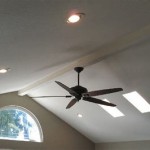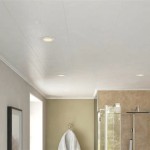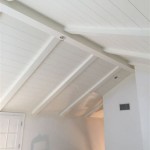Drop ceiling insulation is an effective way of providing thermal protection in commercial and residential buildings, particularly in climates with cold winters. Not only does it keep the environment comfortable, it also helps to reduce energy costs and improve the overall efficiency of the structure. In this article, we’ll discuss the benefits of drop ceiling insulation, the different types available, and the best installation practices.
What are the Benefits of Drop Ceiling Insulation?
Drop ceiling insulation provides a variety of benefits:
- Helps to reduce energy costs due to improved thermal efficiency.
- Reduces noise from outside sources.
- Provides a fire-resistant barrier.
- Can be used to help control humidity and condensation.
- Can help to improve indoor air quality.
Types of Drop Ceiling Insulation
Drop ceiling insulation comes in a variety of forms, each with its own unique set of benefits:
- Fiberglass: Fiberglass is the most common type of drop ceiling insulation and is easy to install. It is lightweight, non-toxic, and relatively inexpensive.
- Cellulose: Cellulose is made from recycled post-consumer materials, making it an excellent eco-friendly choice. It is also moisture-resistant and has good fire-retardant qualities.
- Foam: Foam insulation is more expensive than fiberglass and cellulose, but it is also more effective at blocking sound and heat transfer. It is also easy to install.
- Spray Foam: Spray foam insulation is a great choice for difficult-to-reach areas and is an effective air barrier. It is also moisture-resistant and can provide an additional layer of protection from air infiltration.
Installation Practices
When installing drop ceiling insulation, it’s important to follow these steps:
- Measure the area to be insulated and select the appropriate insulation.
- Cut the insulation to fit the area and ensure that it is firmly attached to the ceiling.
- Ensure that all seams are sealed with caulk or spray foam.
- Place a vapor barrier over the insulation to prevent moisture buildup.
- Check for any air leaks and seal them with caulk or spray foam.
Conclusion
Drop ceiling insulation is an effective way of providing thermal protection to a home or commercial building. It can help to reduce energy costs, improve indoor air quality, and provide a fire-resistant barrier. There are a variety of types of drop ceiling insulation available, and proper installation is essential for optimal performance. By following the steps outlined in this article, you can ensure that your drop ceiling insulation is installed correctly and provides the maximum benefits.















Related Posts








